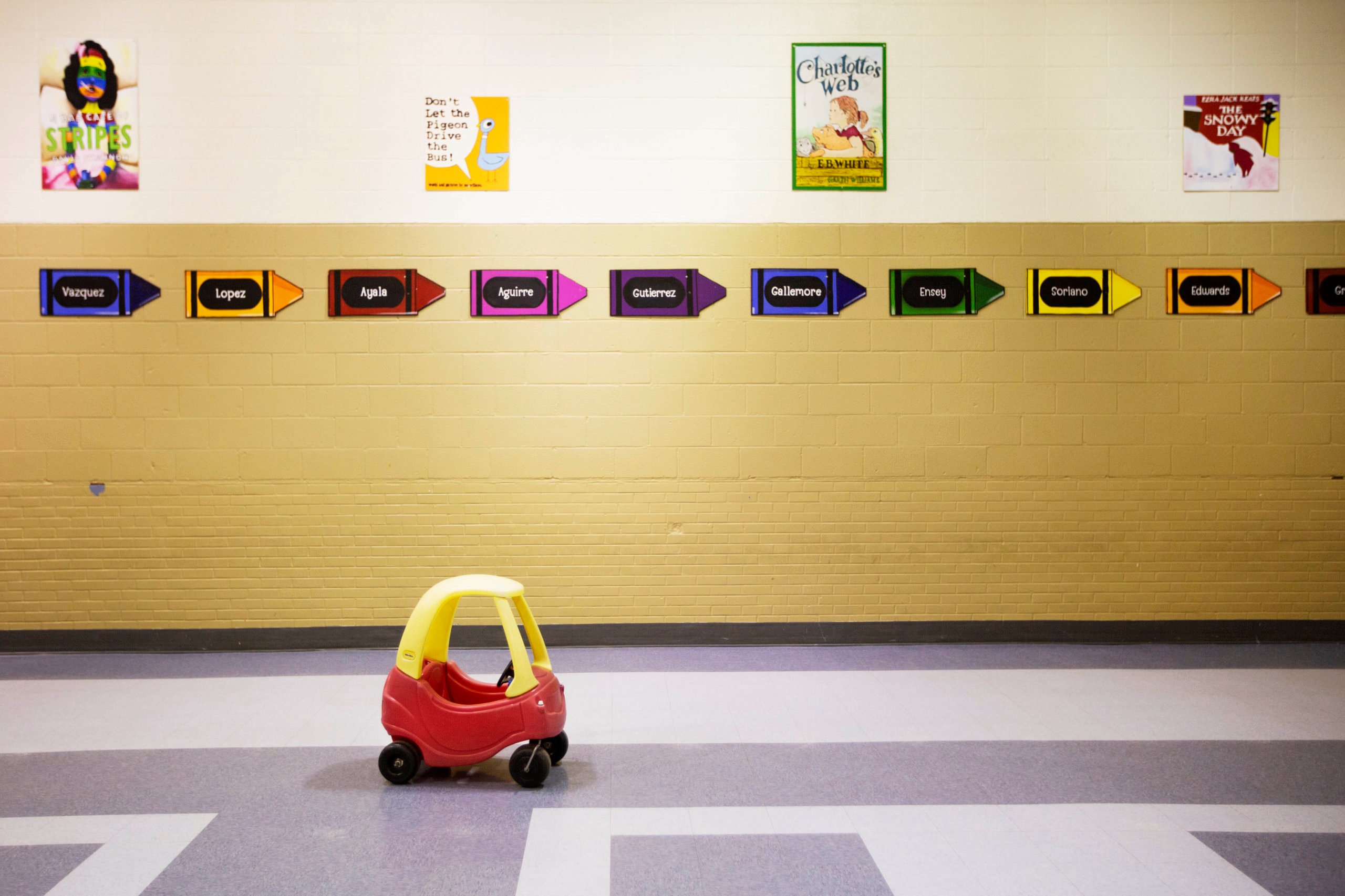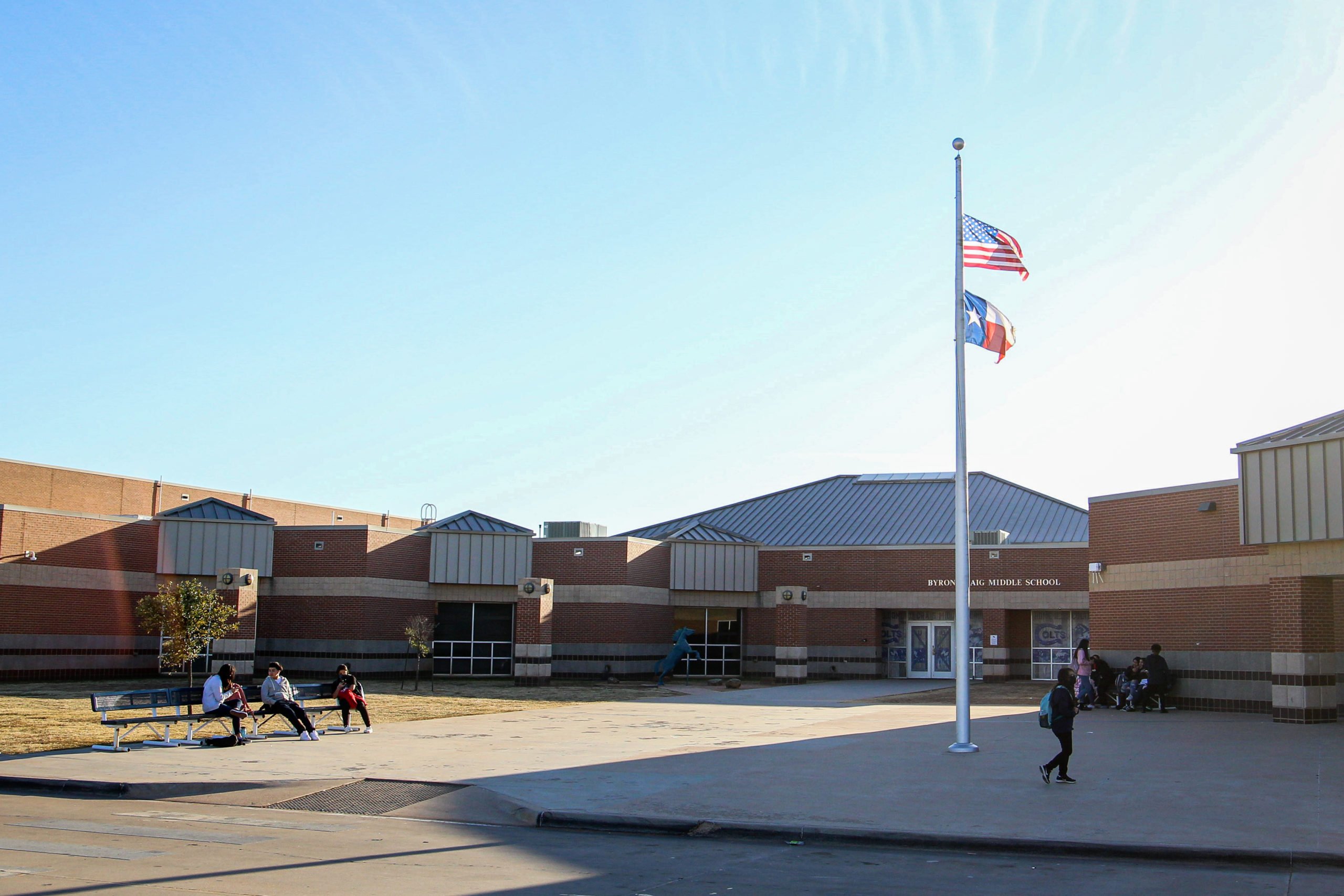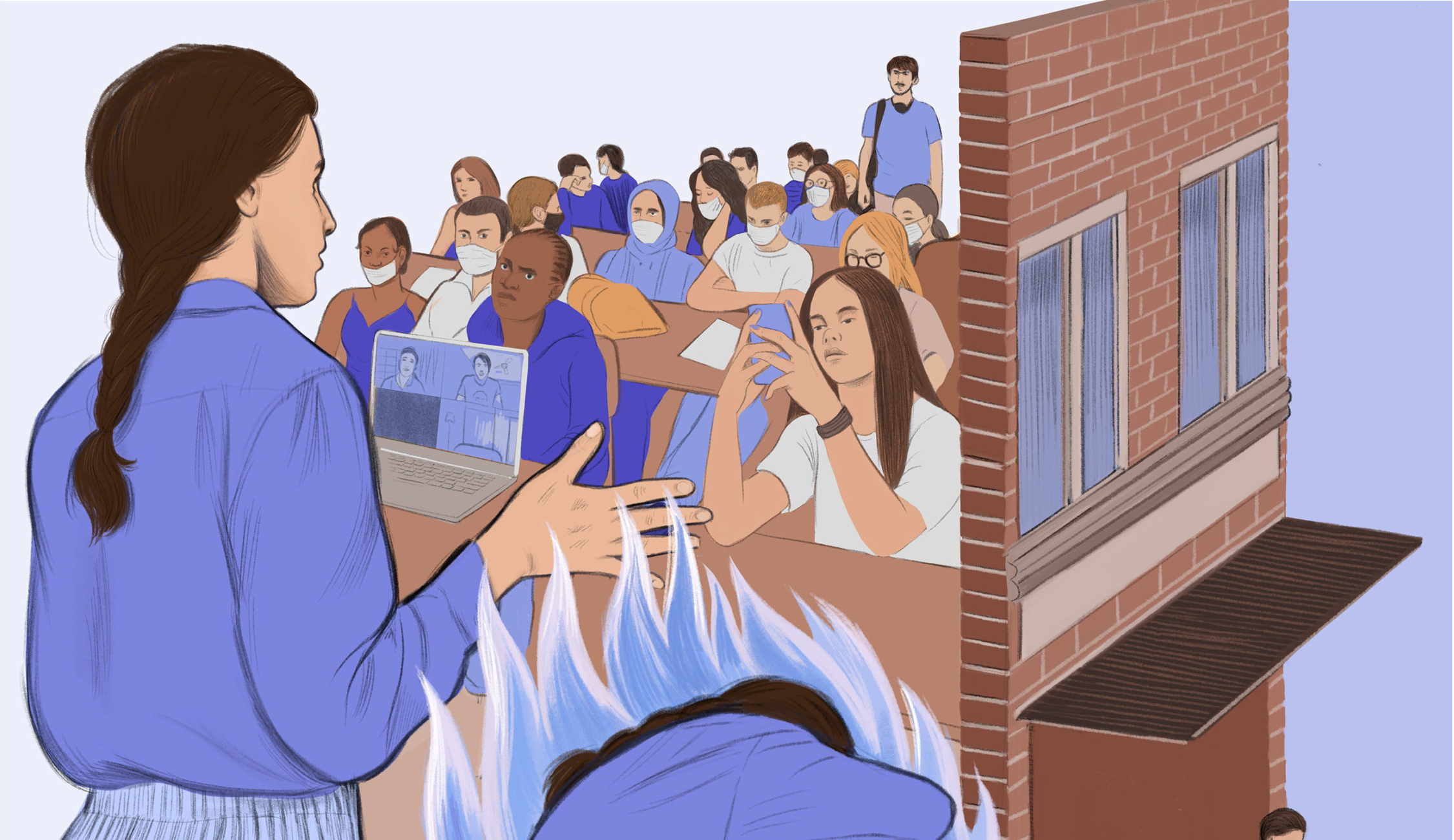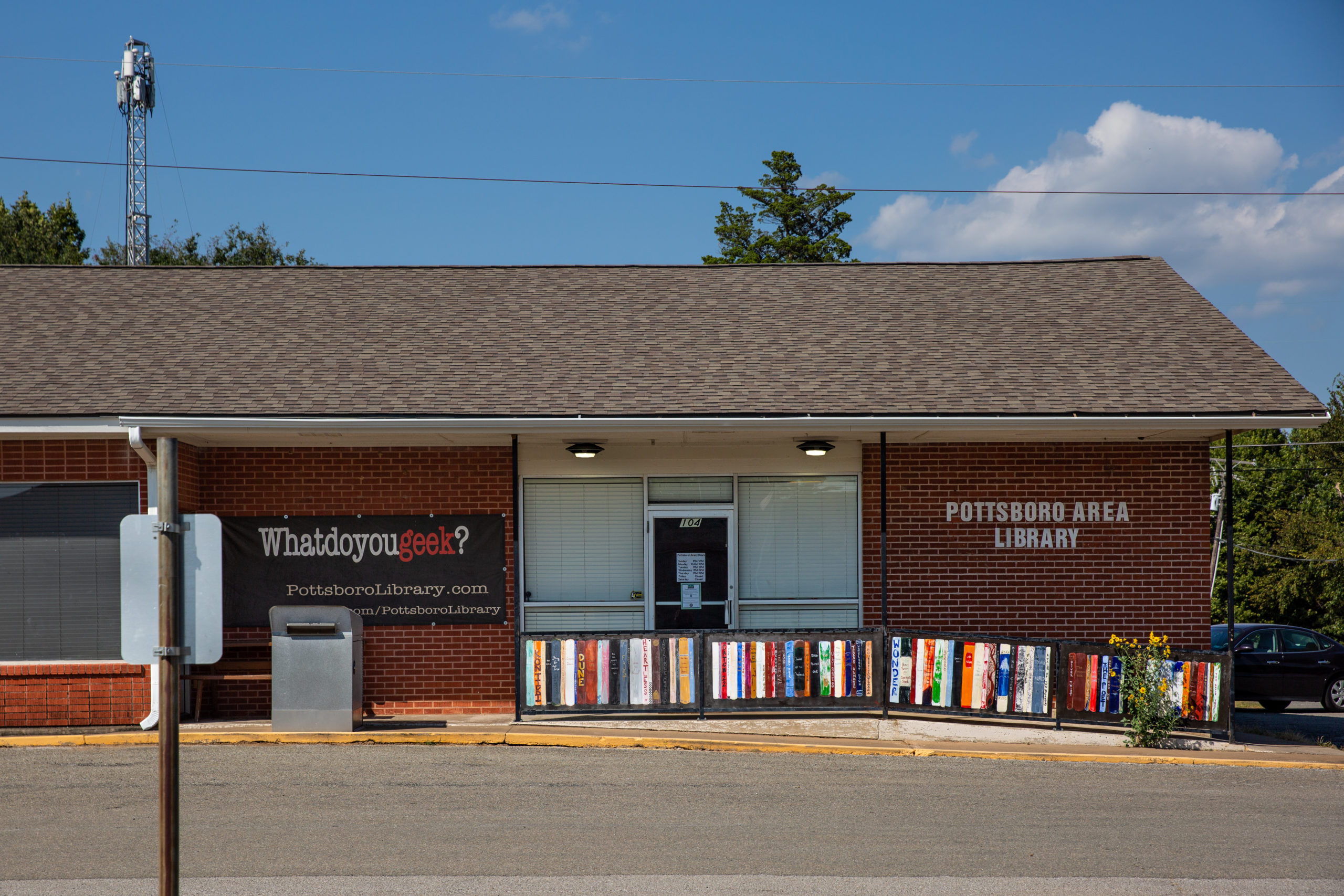
Texas Already Lacked Affordable Child Care. Then COVID-19 Hit.
The coronavirus has temporarily or permanently closed almost half of all child care providers in the state, leaving few options for low-income working families.

Jessica Nolen and her 5-year-old daughter had a morning routine. Fights with their alarm clocks first, some morning television, then quick berry smoothies, and always rushing out the door. By 8:30 a.m., they’d arrive at Opportunity School, a day care in Amarillo, in the Texas Panhandle. Nolen, a single mom, would check in with her daughter’s teachers about her behavior, field trips, and projects before giving her a hug and kiss goodbye and heading to work as a fleet compliance officer. Around 5:30 p.m., Nolen picked her up and drove home, as her daughter relayed stories about her friend and their adventures on the playground. After dinner they’d get ready for day care the next day and start again.
Then the coronavirus pandemic began. In late March, Opportunity School alerted parents that it would be closing to prevent the spread of COVID-19. Nolen’s morning routine, meetings with teachers, and her daughter’s playground tales abruptly stopped. Nolen was lucky that her job allowed her to work from home, but juggling her day-to-day responsibilities with looking after her daughter began to wear on her.
During the day, she balanced filing paperwork and making work calls with preparing lunch and snacks and entertaining her daughter. She constantly explained why they couldn’t play just because they were both home together. And she worried her daughter would fall behind because Nolen couldn’t both work effectively and ensure her daughter was being stimulated. “We enjoyed our time together, but also I think she got tired of just being with me and she wanted to play with friends,” Nolen says. “A struggle for me personally was just feeling like I should’ve been able to get more done.”
“The backbone for working families is child care.”
Texas already lacked adequate access to affordable child care before the pandemic. Now, the coronavirus has temporarily or permanently closed almost half of all child care providers in the state, leaving few options for low-income working families. Months in, providers are scrambling to safely reopen and stay open with limited funding and under a patchwork of federal, state, and local guidance. As the pandemic drags on, school reopenings are uncertain, and families have to go to work, parents like Nolen worry about being left with few if any options for what to do with their kids.
“The backbone for working families is child care,” says Jill Goodrich, executive director of Opportunity School. But during the pandemic, “it has been a complete afterthought nationally, on a state level, and even in some respects on a local level.”
Nine weeks after it closed, Opportunity School reopened on May 28, just after the state ended its mandated closure of child care centers except to kids whose parents are essential workers. Nolen re-enrolled her daughter right away, but she worries the center could close again soon if COVID-19 cases continue to rise. She has few other options: Opportunity School is one of just two nationally accredited childhood programs in Amarillo. According to Children at Risk, a statewide advocacy group, the city is a child care desert, where care is available to less than a third of children under age 6. Now Opportunity School, which normally serves about 160 infants and toddlers, 80 percent of whom qualify for free or reduced lunch, is operating at half-capacity to reduce the spread of COVID-19. Meanwhile, the center recently increased its rates, and Nolen, who pays full price for her daughter, now has to pay $40 more each week—an added financial burden that she says equates to another monthly grocery bill.
As licensed child care providers face uncertainty and changing and scattered guidance from federal, state, and local leaders, parents are left in limbo. Since March, there have been 3,330 COVID-19 cases–1,113 children and 2,217 staff–reported at more than 1,900 child care operations across the state, according to Texas’ Health and Human Services Commission (HHSC). But the agency is not publicly releasing information about the outbreaks, leaving parents unable to make informed decisions about whether and where to send their children. Providers must follow guidelines including restricting who comes into the building, checking temperatures at the door, and requiring parents to drop off and pick up their kids outside. But quality checks done by HHSC to ensure compliance have been paused. And the guidance is coming from multiple government agencies, including HHSC, the Texas Workforce Commission, and the Centers for Disease Control (CDC), leading to confusion among providers.
“We’re left in this no man’s land,” says Goodrich, who says she’s been bounced between the local health department and the CDC without clear answers. “We’re trying to figure it out on our own.”
As COVID-19 cases continue to climb, day care providers worry that if they’re forced to close again they may not be able to reopen. Before the pandemic, many child care providers barely made enough to cover staff and other costs. COVID-19 is exacerbating these challenges, and could result in the loss of nearly 4.5 million child care spots nationwide—almost half of the total—without sufficient federal funding, according to a study by the Center for American Progress (CAP). Texas could lose nearly 484,000 spots, more than half of its total. Katie Hamm, vice president of early childhood policy at CAP, estimates that 80 percent of child care providers could be shuttered by the end of the year if they don’t receive a federal bailout.
“[Closures are] going to have devastating consequences for women and set the economy back,” Hamm says. “This is an industry that has taken years to grow and it’s not going to just come back when Congress decides they’re going to invest in it.”
“We’re left in this no man’s land. We’re trying to figure it out on our own.”
As of mid-August, more than a quarter of the state’s roughly 17,000 child care providers open in February were closed, according to HHSC. An analysis from Children at Risk found that last year, before the pandemic, seven of 10 low-income kids with working parents in Texas lived in areas without access to subsidized child care. Already there was a statewide shortage that amounted to only 242 subsidized child care spots per one thousand kids. Only half of Texas providers accept state subsidies that help low-income working families pay for child care. Nationwide, essential workers are more likely to be Black or Hispanic—communities that face greater shortages of subsidized child care and are disproportionately impacted by COVID-19.
According to Nneka Ibekwe-Okafor, the director of early education research and policy for Children at Risk, Texas has collected closure data, continued subsidy payments even when facilities closed, and redefined eligibility requirements to cover the costs of child care for essential workers. But she says that has only benefited a small subset of parents and providers.
Most of the now $747 million in annual federal funding for Texas’ child care industry comes from a Child Care and Development Block Grant. The state recently received more than $371 million from the emergency $3.5 billion in funding issued for child care under the Coronavirus Aid, Relief, and Economic Security (CARES) Act, but this hasn’t been enough to bolster flailing facilities and homes. Lawmakers and advocates have attempted to alleviate the financial shortfall for child care providers, which aren’t funded by state and local municipalities as K-12 schools are. For example, the federal Child Care Is Essential Act would give $50 billion to help child care centers reopen and stay open safely. The House of Representatives approved the grant in late July, along with another measure that includes tax provisions to make child care more affordable. But the funding is still tied up in the GOP-controlled Senate.
As the end of the summer nears, Jessica Nolen is now caught in the uncertainty and controversy over school openings and closures. Her daughter is supposed to start kindergarten in late August with classes in person. If the school is shuttered, Nolen doesn’t know what she’ll do. Starting this fall she can’t work remotely anymore. Her daughter’s dad lives across the country, Nolan’s parents live an hour away, and her daughter’s other grandparents live two hours away. Already Nolen says weighing her daughter’s education and happiness against health and safety concerns was “hard to balance.” But as she prepares herself for the uncertainty of this fall, she worries about being left with no options at all.
Read more from the Observer:
-
Texas Solar Hits a Turning Point: As the coronavirus pandemic devastates the state’s already flailing oil and gas industry, solar energy production is on a trajectory for record growth.
-
The Coronavirus Pipeline: U.S. deportations of migrants have exported COVID-19 to Guatemala and prompted fear, chaos, and a collapse of already fragile health services.
-
A New Study Finds a Link Between Flaring and an Increase in Premature Births: In the Eagle Ford Shale, a study found that pregnant, Latina women were more likely than white women to give birth prematurely.


